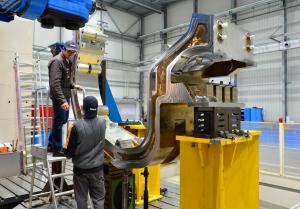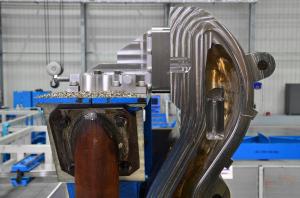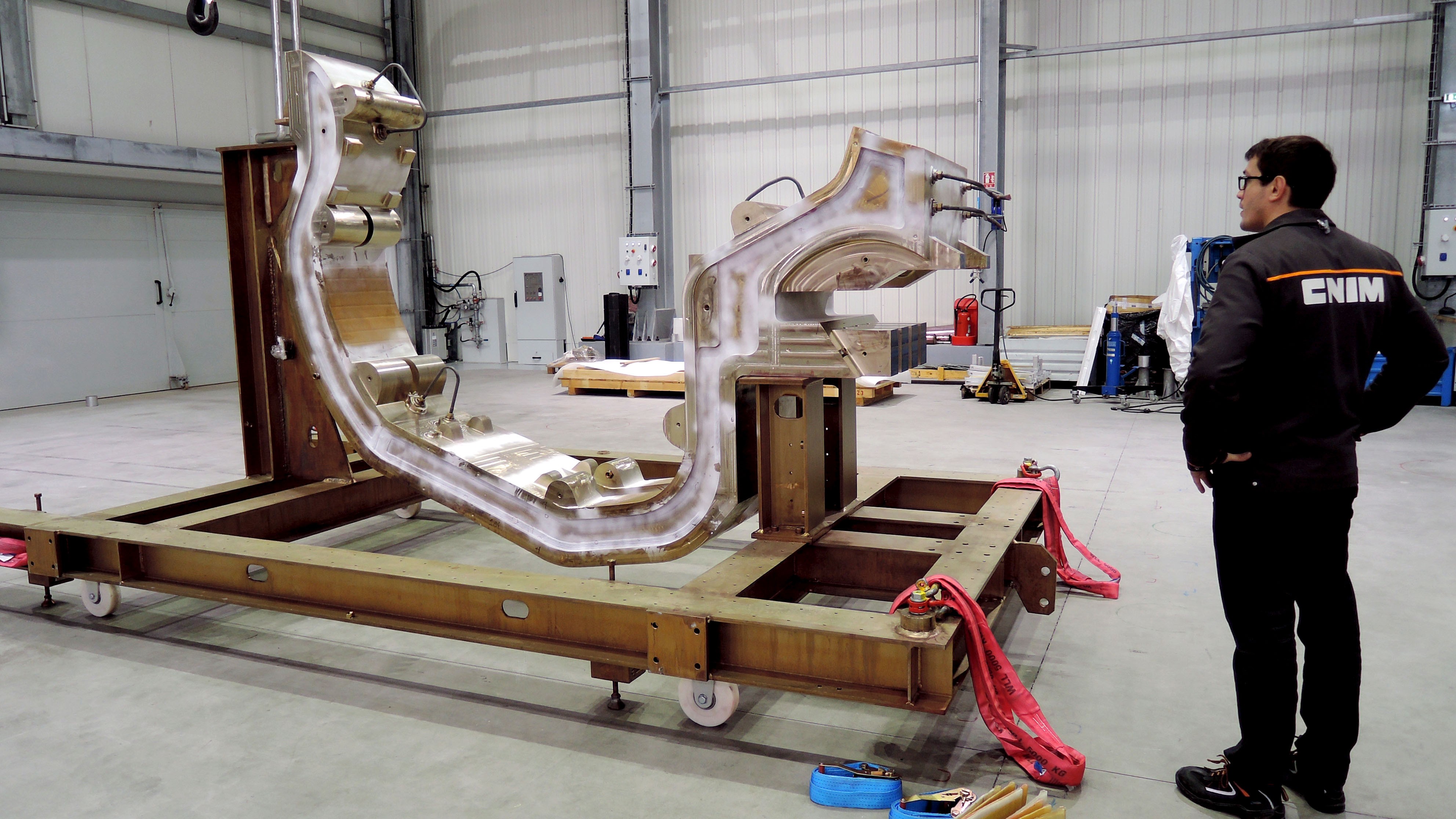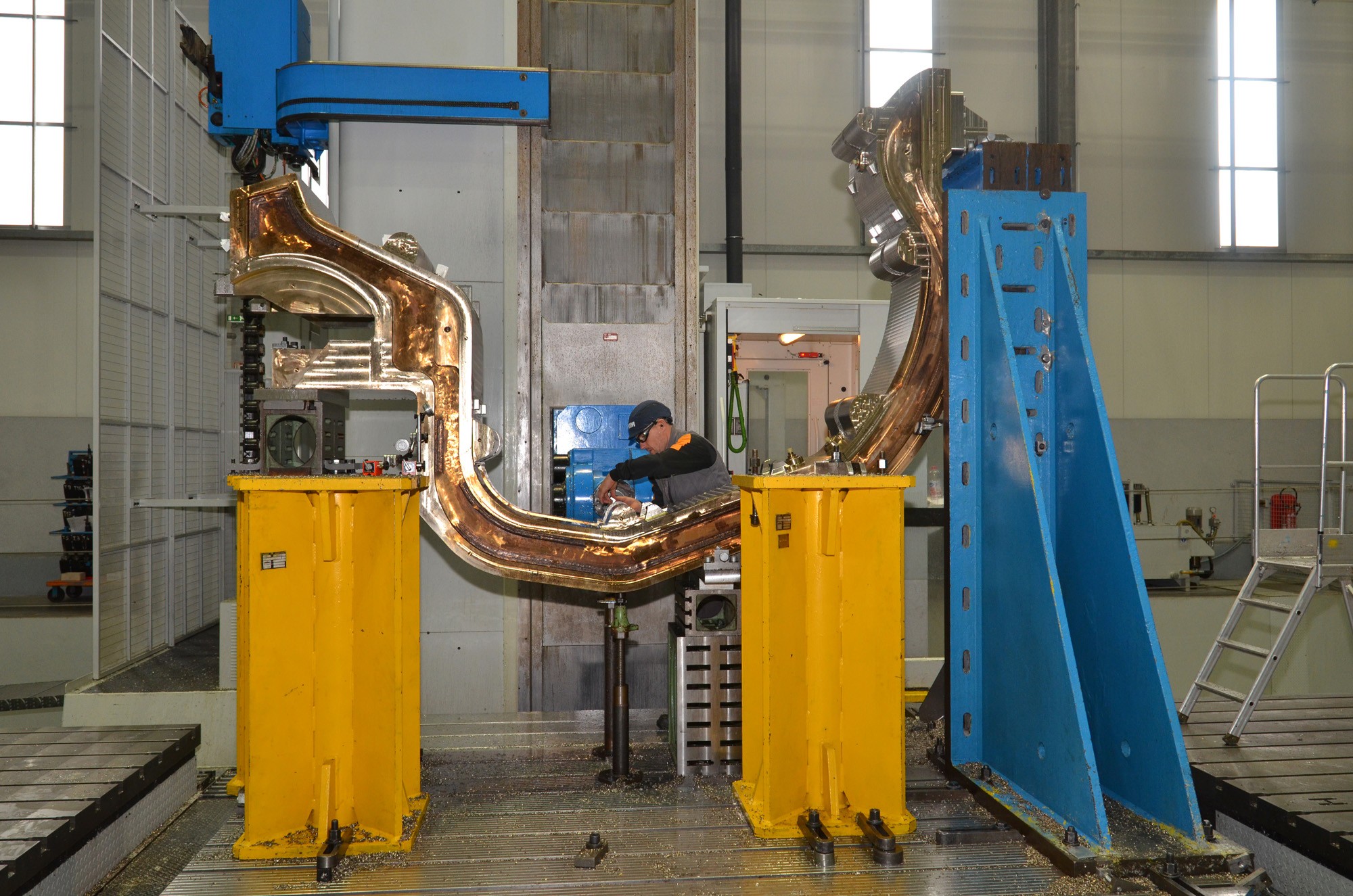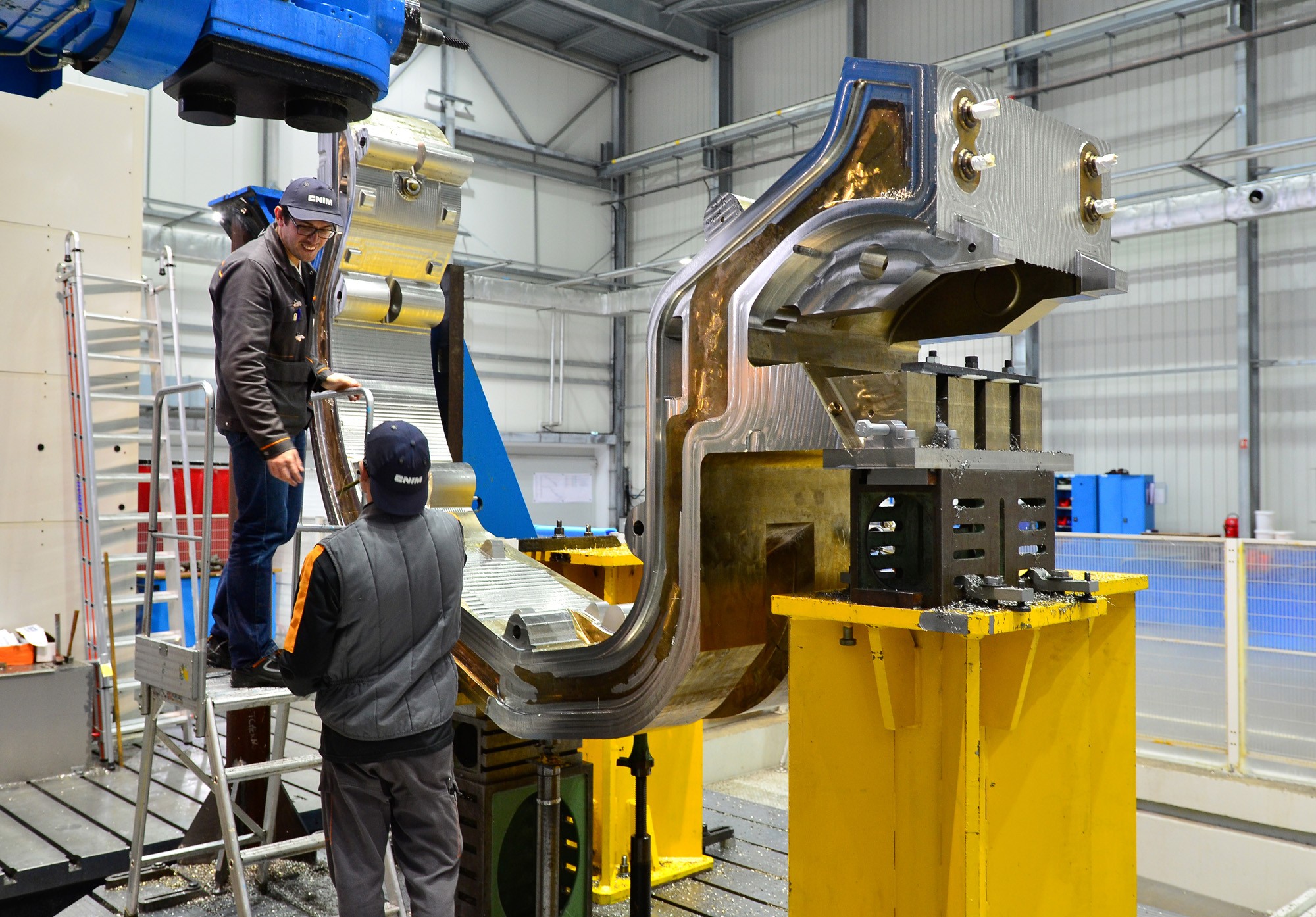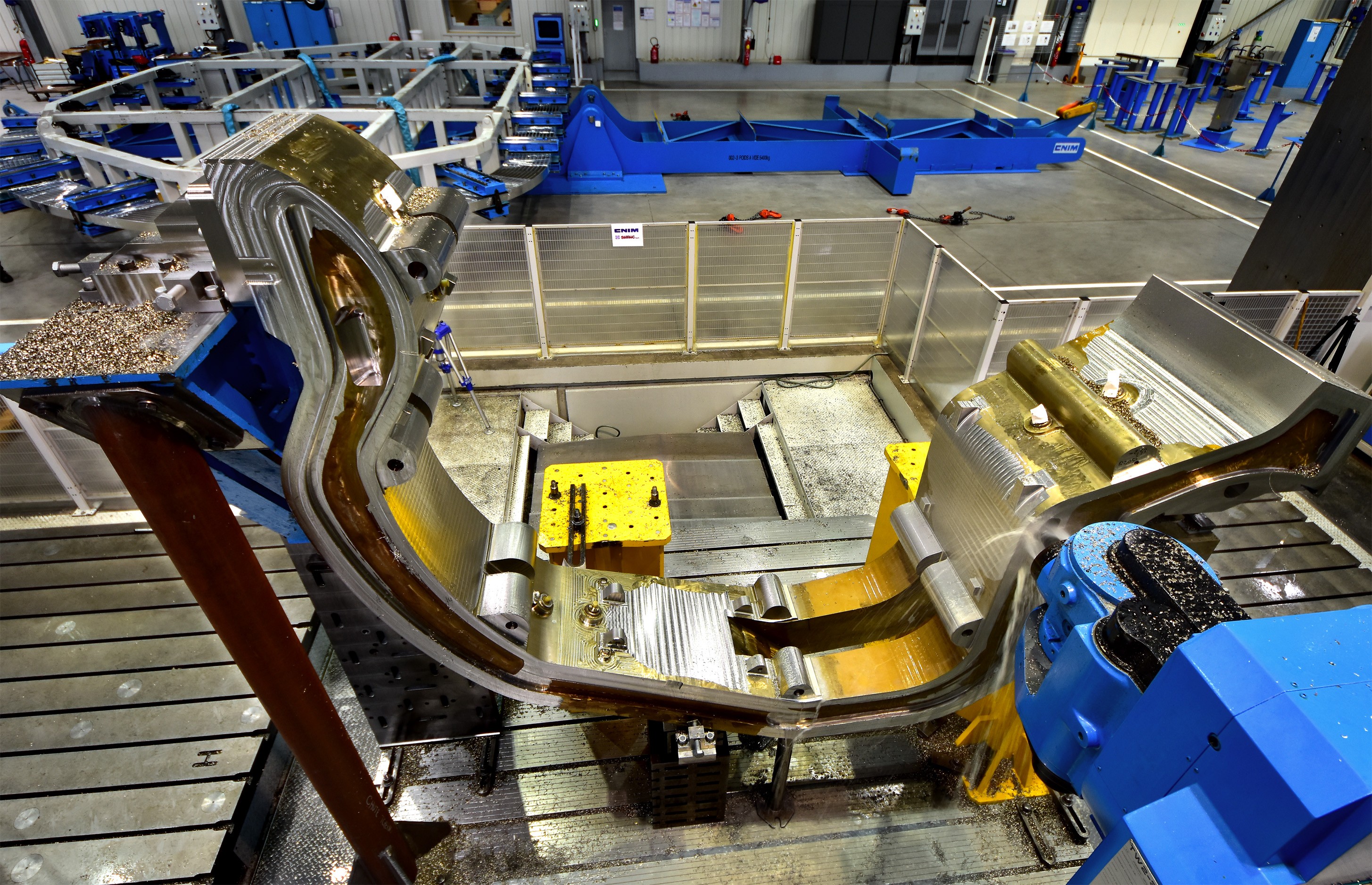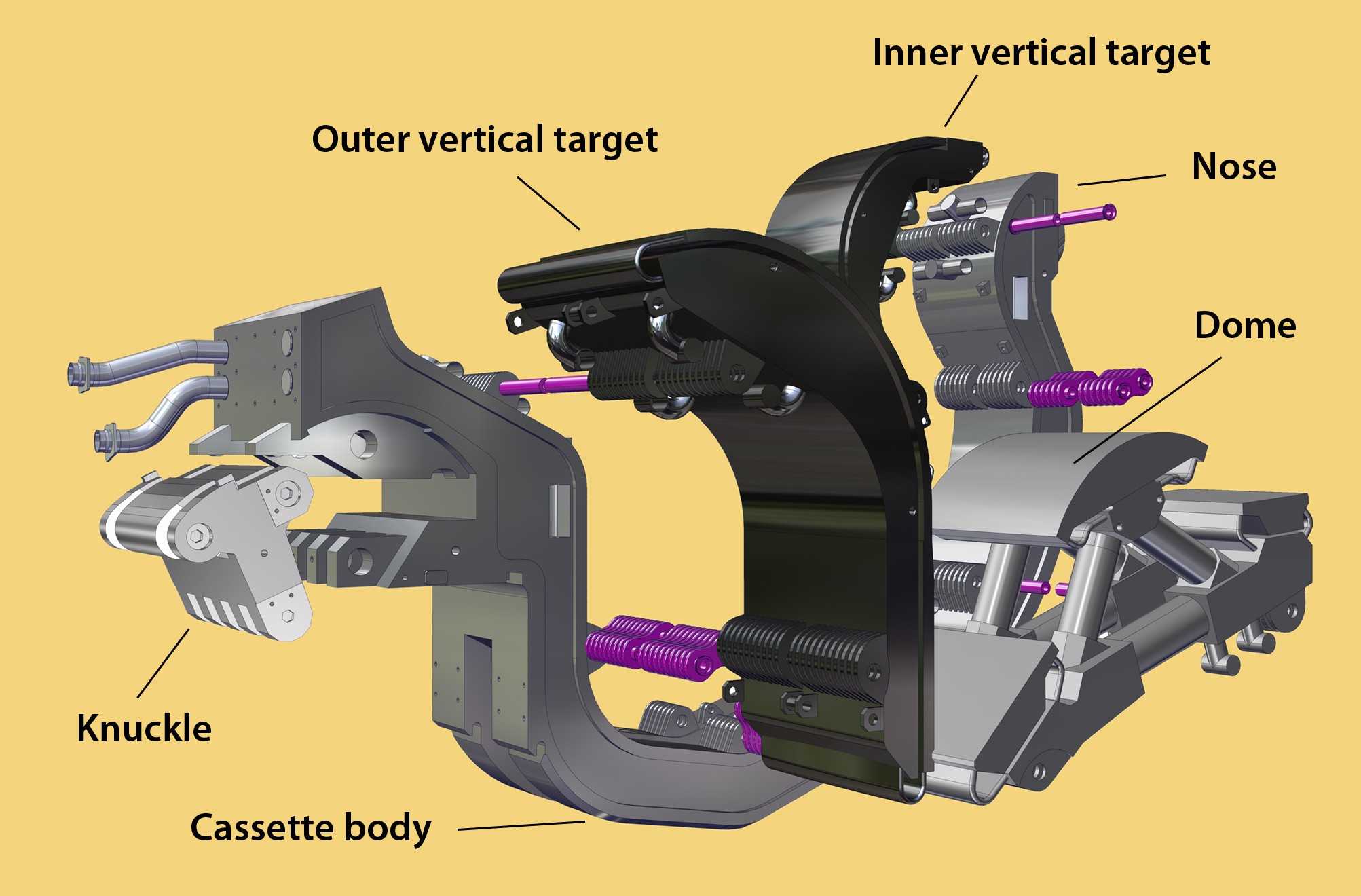Once the prototypes are finalized, the European Domestic Agency (responsible for the procurement of the divertor cassettes) will choose the company or consortium for the fabrication of all or part of 58 cassette bodies—54 to be installed in the machine plus 4 to 6 spares.
In the Mediterranean harbour of La Seyne-sur-Mer, France, an hour and a half drive from the ITER site, the CNIM-Simic prototype is in the last stages of completion.
The fabrication of the component was led by CNIM and shared between the two companies: the "primary segments" were machined and electron beam welded at CNIM in La Seyne, sent to Simic in Camerana, Italy, for additional tungsten inert gas welding and non-destructive controls, and eventually brought back to CNIM for final machining, verifications and functional tests.
Resting on sturdy steel supports in an enclosure inside CNIM's 3,000 m² hall, the prototype is now in the last stages of the 18-month process that progressively transformed twenty-five tonnes of high-grade steel into a lean four-tonne ITER component.
"We are finalizing the rough machining phase," explains Eric Mercier one of CNIM's methods engineers. "Three more millimetres to remove and we're done." Tolerances are especially tight and, despite its name, the operation is so precise and delicate that it will take three weeks to remove the remaining three millimetres ...
Following finishing works, a series of operations will be performed—dimensional inspection, a hydraulic test, a hot helium leak test, and eventually functional tests that will check the mechanism for the insertion of the component into the rail running at the bottom of the vacuum vessel.
Amidst shiny metal shavings and splashes of cutting fluid the massive and elegant metal component is acquiring its final form—an alien shape to be duplicated some 60 times before being exposed to the fire and forces of the ITER sun.
(1) The cassette bodies are designed to resist transient electromagnetic induced forces as high as 100 tonnes, which are expected to develop during a few tens of milliseconds during the most severe disruptions.

